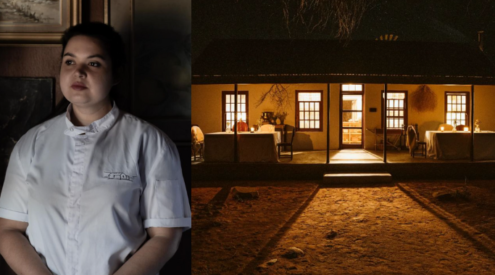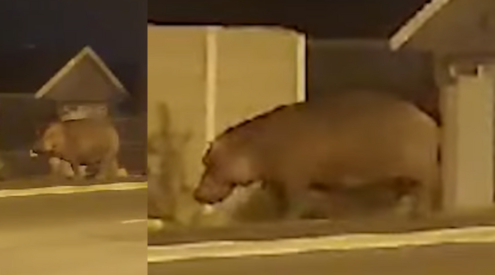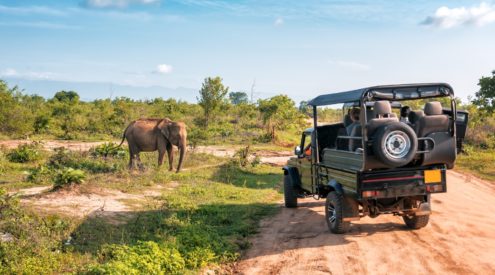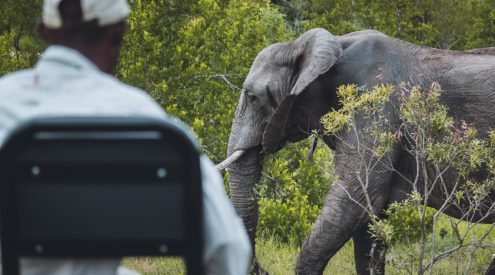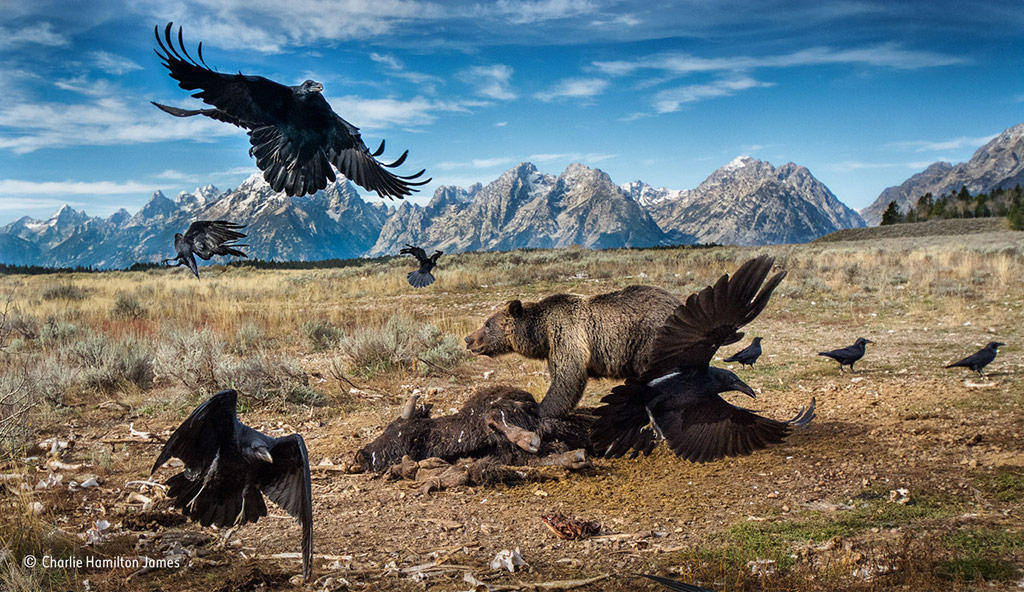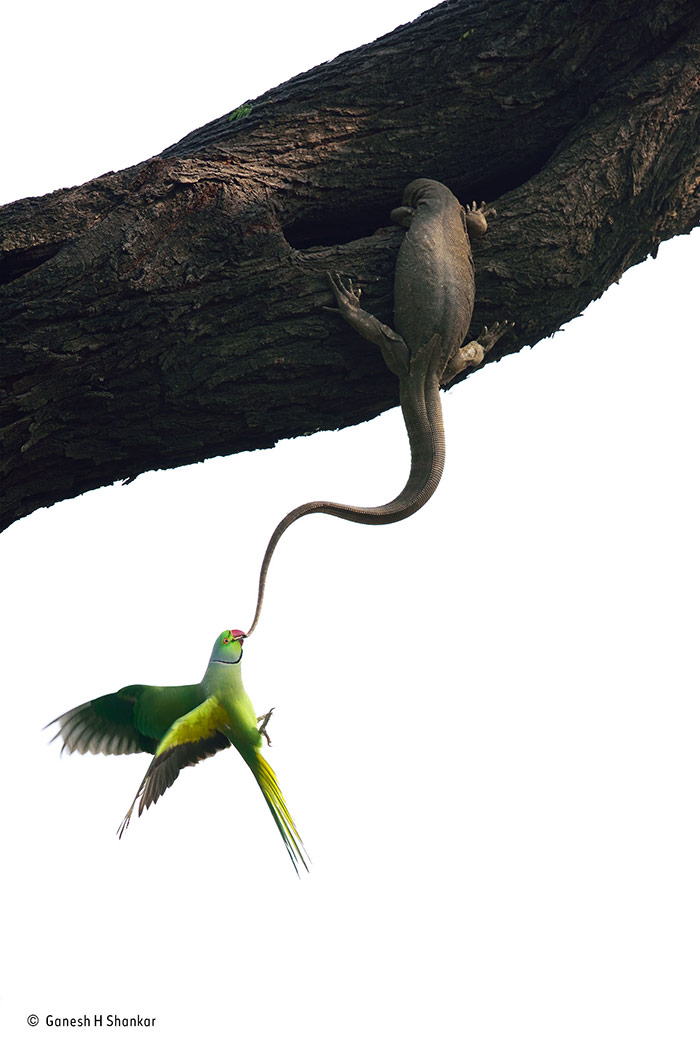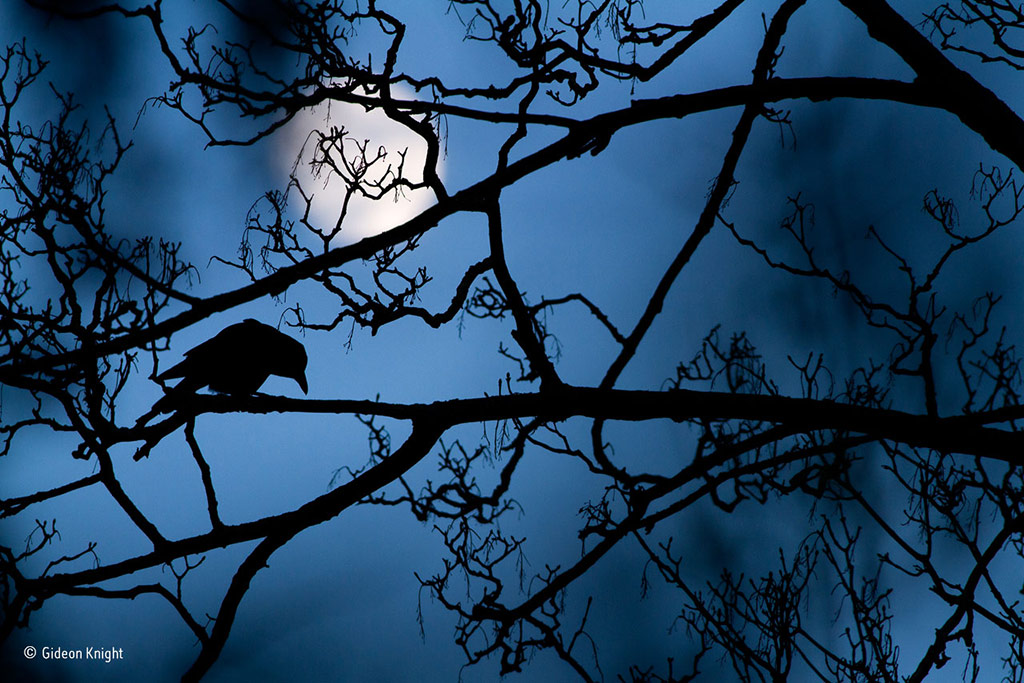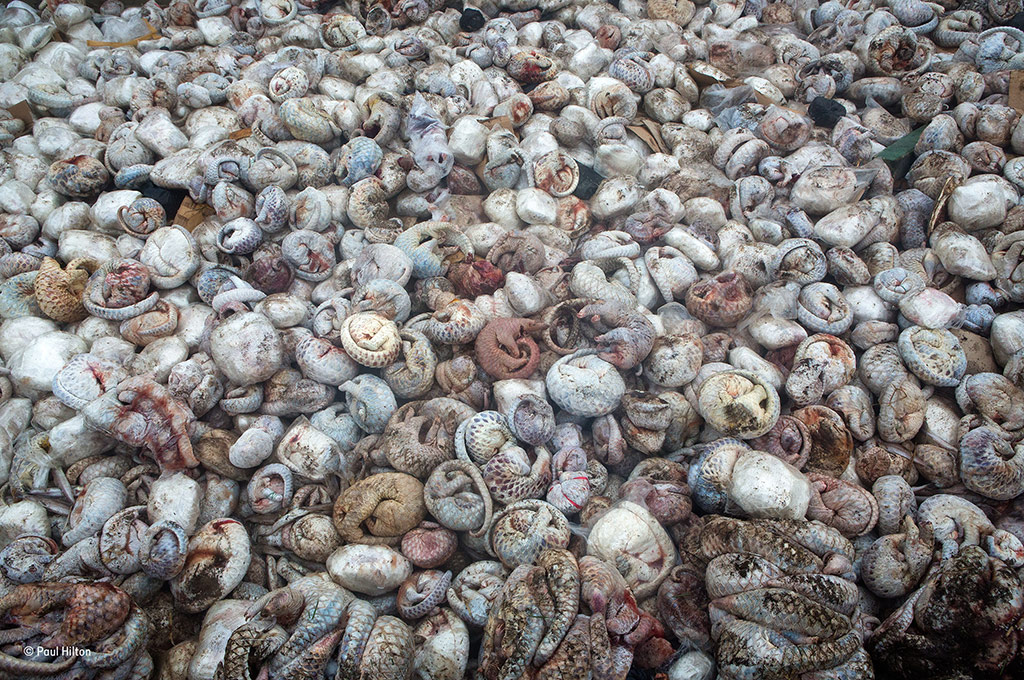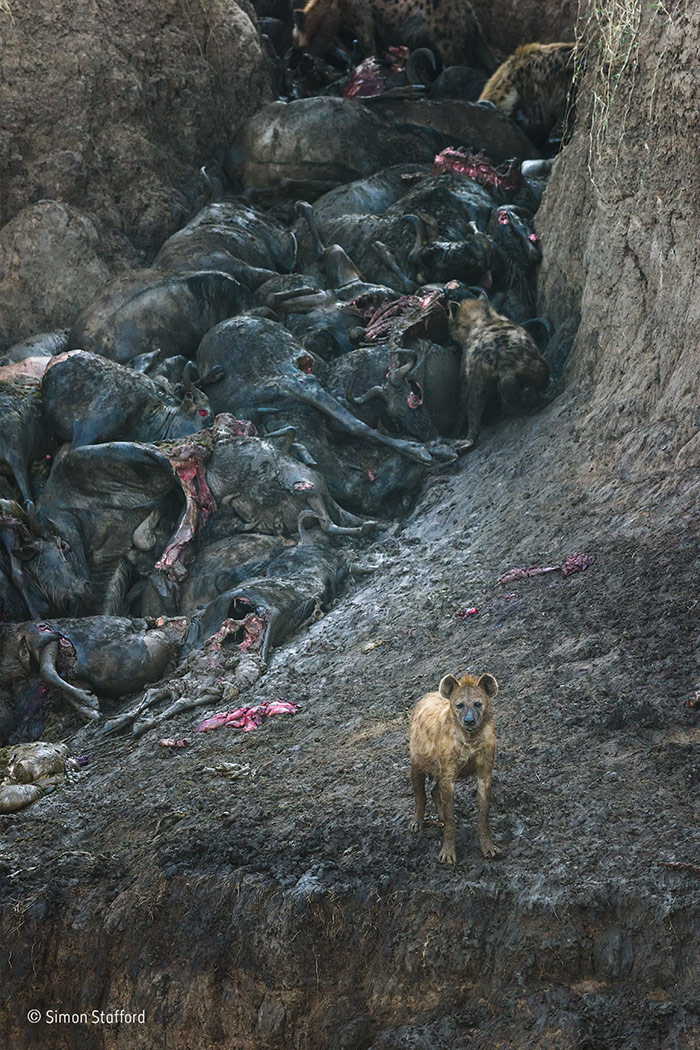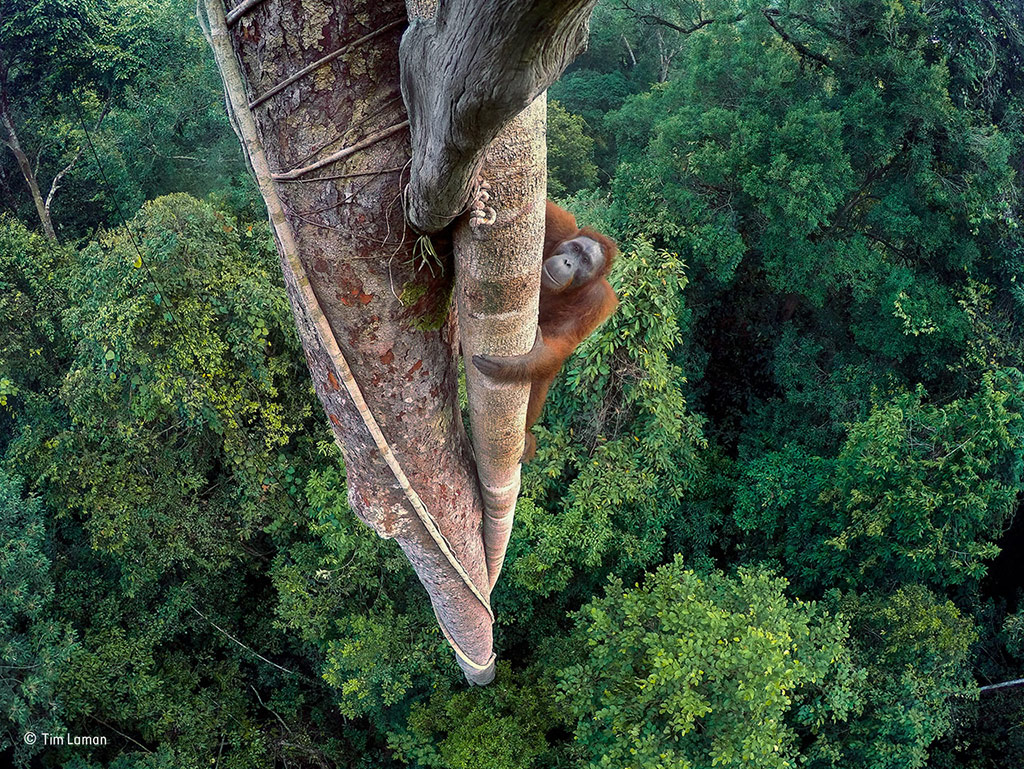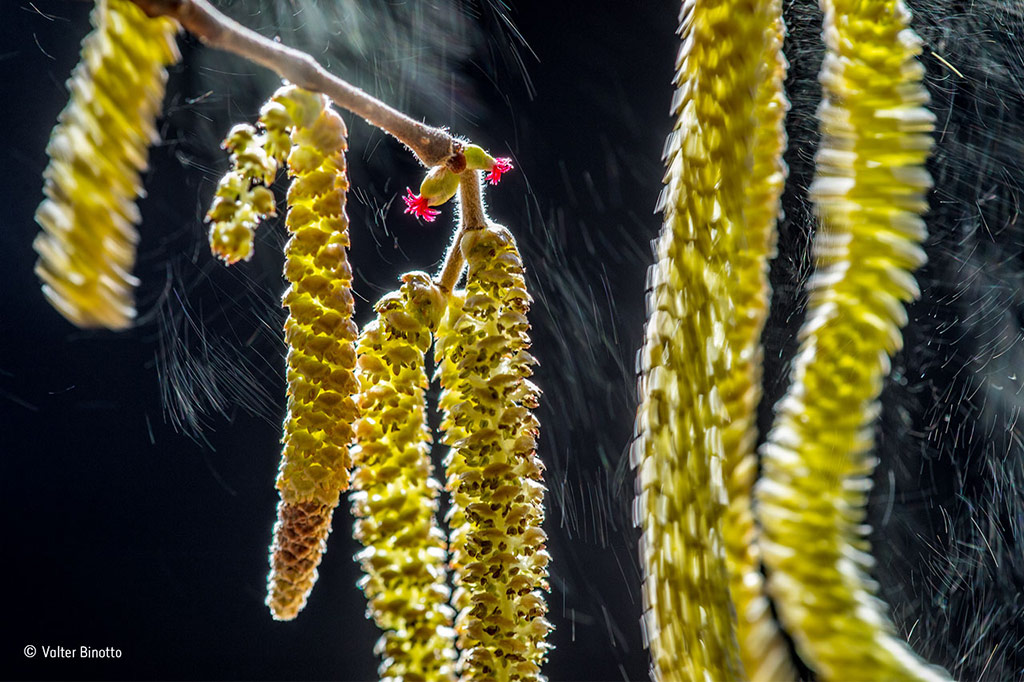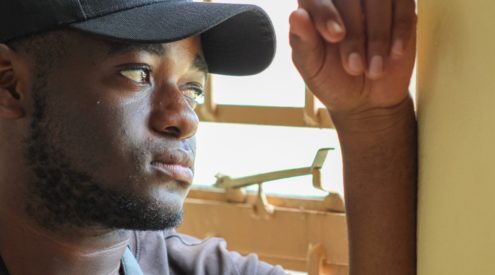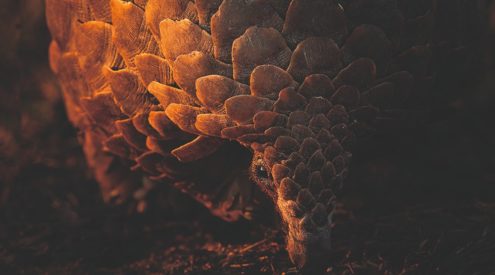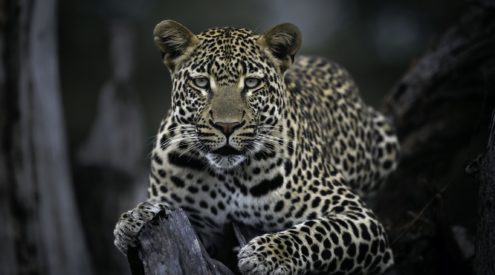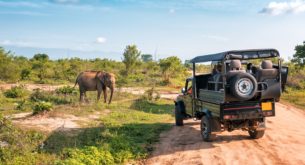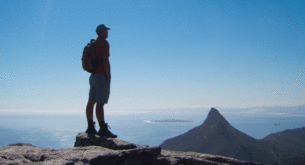What does it take to capture a world-class wildlife photograph? If you don’t live in the bush, or you aren’t keen on spending the value of a decent middle-entry car on your camera lenses, or you’re just habitually unlucky, it might seem impossible.
Fear not, friends! Because this year, the Natural History Museum has released their 2016 selection for the international Wildlife Photographer of the Year competition, and yes – it’s true – the winning photo was taken with a GoPro Hero4 Black.
It’s a great endorsement for the quality of new GoPros, but it also signals that there’s hope for all of us. So on that note, please enjoy the beautiful images below: and the stories behind them, straight from the photographers themselves.
Feeling inspired? We’re accepting entries for Getaway Gallery 2017. Just saying.
1. Entwined lives
Winner: Wildlife Photographer of the Year 2016
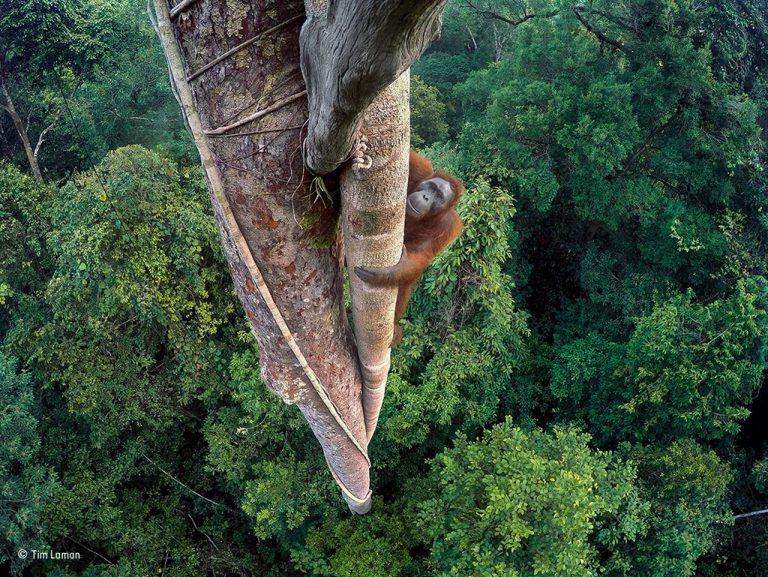
A young male orangutan makes the 30-metre (100-foot) climb up the thickest root of the strangler fig that has entwined itself around a tree emerging high above the canopy. Photo by Tim Laman.
The backdrop is the rich rainforest of the Gunung Palung National Park, in West Kalimantan, one of the few protected orangutan strongholds in Indonesian Borneo. The orangutan has returned to feast on the crop of figs. He has a mental map of the likely fruiting trees in his huge range, and he has already feasted here. Tim knew he would return and, more important, that there was no way to reach the top – no route through the canopy – other than up the tree. But he had to do three days of climbing up and down himself, by rope, to place in position several GoPro cameras that he could trigger remotely to give him a chance of not only a wide‐angle view of the forest below but also a view of the orangutan’s face from above. This shot was the one he had long visualized, looking down on the orangutan within its forest home.
2. Wild West stand-off
Finalist: Mammals

A grizzly bear charges at ravens trying to grab a piece of the feast. The bison is a road-kill that rangers have moved to a spot they use for carrion to avoid contact between predators and tourists. Photo by Charlie Hamilton James.
The location is Grand Teton National Park, part of the Greater Yellowstone ecosystem in the western US, where grizzlies still roam. ‘Approaching a bear’s lunch is a dangerous thing to do,’ says Charlie. So there were strict protocols for getting out of his vehicle every time he went to check his camera trap. Over nearly five months, he had thousands of images of ravens and vultures, but only a few of wolves or bears, and none were up to the high standards he set himself, until this one. ‘The moment I saw it, I was so excited. It had taken nearly five months to get a decent image out of the set-up. It’s rare that I like my images, but I really like this one – though I still get annoyed that the top raven is positioned right over the Grand Teton mountain.’
The Yellowstone grizzly population has been protected since the 1970s, but now that numbers are recovering, it is proposed that the population is removed from the federal list of protected species, allowing hunting outside the two parks. This has raised concerns not only about the grizzlies’ fate but also about the knock-on effect on the ecology.
3. Pangolin pit
Winner: the Wildlife Photojournalist Award: single image
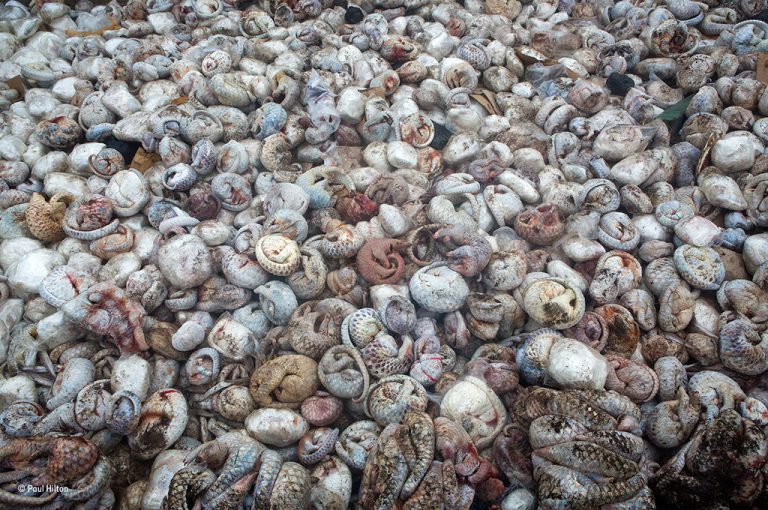
Nothing prepared Paul for what he saw: some 4,000 defrosting pangolins (5 tons) from one of the largest seizures of the animals on record. They were destined for China and Vietnam for the exotic‐meat trade or for traditional medicine (their scales are thought, wrongly, to treat a variety of ailments). Photo by Paul Hilton.
Pangolins have become the world’s most trafficked animals, with all eight species targeted. This illegal trade, along with habitat loss and local hunting, means that the four Asian species are now endangered or critically endangered, and Africa’s four species are heading that way. These Asian victims, mostly Sunda pangolins, were part of a huge seizure – a joint operation between Indonesia’s police and the World Conservation Society – found hidden in a shipping container behind a façade of frozen fish, ready for export from the major port of Belawan in Sumatra.
Also seized were 96 live pangolins (destined to be force-fed to increase their size), along with 100 kilos (220 pounds) of pangolin scales (formed from keratin, the same substance in fingernails and rhino horn) worth some $1.8 million on the black market, and 24 bear paws. All had come from northern Sumatra. The dead pangolins were driven to a specially dug pit and then incinerated. The live ones were taken north and released in the rainforest. ‘Wildlife crime is big business,’ says Paul. ‘It will stop only when the demand stops.’
Looking for some good news? Pangolins recently received the highest international level of protection from trafficking.
4. The alley cat
Winner: Urban

At night, in the Aarey Milk Colony in a suburb of Mumbai bordering Sanjay Gandhi National Park, leopards slip ghost-like through the maze of alleys, looking for food (especially stray dogs). Photo by Nayan Khanolkar.
The Warli people living in the area respect the big cats. Despite close encounters and occasional attacks (a particular spate coinciding with the relocation of leopards from other areas into the park), the cats are an accepted part of their lives and their culture, seen in the traditional paintings that decorate the walls of their homes. The leopard is not only the most versatile of the world’s big cats but possibly the most persecuted. With growing human-leopard conflicts elsewhere grabbing the headlines, Nayan was determined to use his pictures to show how things can be different with tolerance and planning.
Once he had convinced the Warli people of his plan, they supplied him with valuable information, as well as keeping an eye on his equipment. Positioning his flashes to mimic the alley’s usual lighting and his camera so that a passing cat would not dominate the frame, he finally – after four months – got the shot he wanted. With a fleeting look of enquiry in the direction of the camera click, a leopard went about its business alongside people’s homes. Nayan hopes that those living in Mumbai’s new high-rise developments now impinging on the park will learn from the Warli how to co‐exist with the original inhabitants of the land.
5. The aftermath
Winner: Mammals
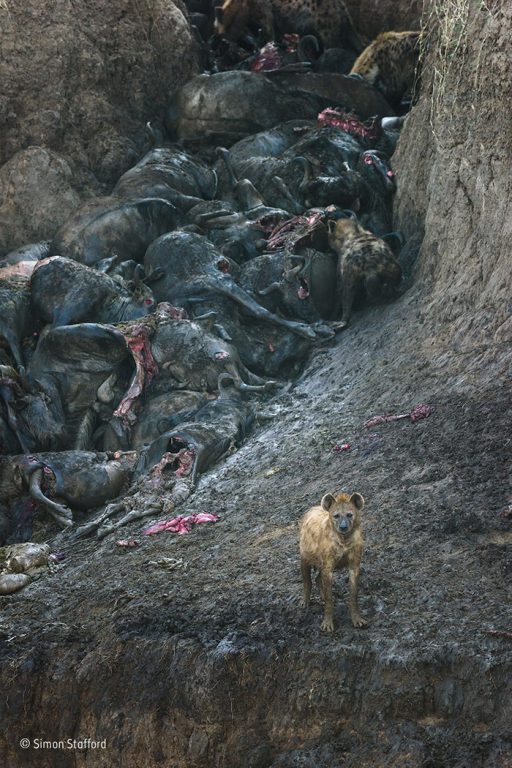
Eerie silence and a mound of lifeless bodies: the contrast with the mayhem of the previous day couldn’t have been starker. And the stench was already dreadful. Photo by Simon Stafford.
The day before, thousands of wildebeest on migration through Kenya’s Maasai Mara National Reserve had massed at the Mara River, nervous of the crossing ahead and of the huge Nile crocodiles lying in wait. Once one made the leap, they all surged forward and the river became a maelstrom of flailing hooves and crocodiles. In their frantic efforts to get out, they carved gullies in the riverbank, and in over an hour, as the gullies became deeper and deeper, more and more wildebeest slipped back down and died under the hooves of the ones coming out of the river.
Simon returned at first light, knowing that scavengers would gather at the site of the carnage. ‘It was a sinister scene,’ he says. ‘There must have been 50 or more carcasses, piled two or three deep.’ Spotted hyenas were already feeding, and hippos and crocodiles had gathered in the river below. As Simon watched from the other side of the wide river, one hyena left the feast and stood, as if standing sentry, at the river’s edge watching the gathering of crocodiles in the water below.
6. Playing pangolin
Finalist: Black and White

The lions (in South Africa’s Tswalu Kalahari Private Game Reserve) had discovered a Temminck’s ground pangolin. Photo by Lance van de Vyver.
This nocturnal, ant-eating mammal is armour-plated with scales made of fused hair, and it curls up into an almost impregnable ball when threatened. Pangolins usually escape unscathed from big cats (though not from humans, whose exploitation of them for the traditional medicine trade is causing their severe decline). But these lions just wouldn’t give up. ‘They rolled it around like a soccer ball,’ says Lance. ‘Every time they lost interest, the pangolin uncurled and tried to retreat, attracting their attention again.’ Spotting a young lion holding the pangolin ball on a termite mound close to the vehicle, Lance focused in on the lion’s claws and the pangolin’s scratched scales, choosing black and white to help simplify the composition.
It was 14 hours before the pride finally moved off to hunt. The pangolin did not appear to be injured, but it died shortly after, probably not just from the stress of capture but also from being out in the heat all day.
7. Snapper Party
Winner: Underwater
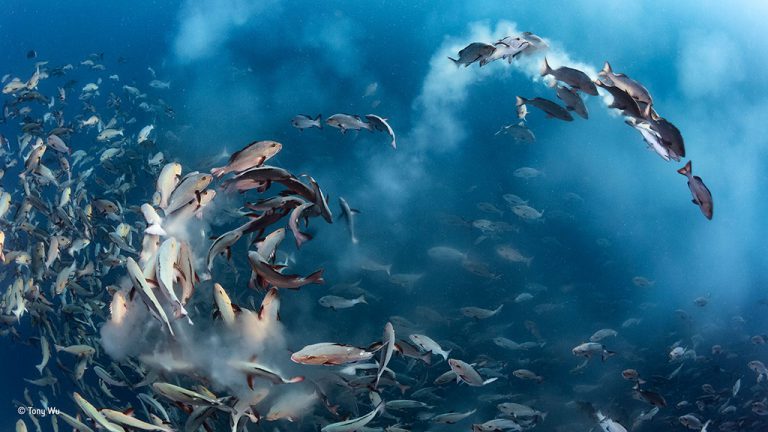
For several days each month (in tandem with the full moon), thousands of two‐spot red snappers gather to spawn around Palau in the western Pacific Ocean. Photo by Tony Wu.
The action is intense as the fish fill the water with sperm and eggs, and predators arrive to take advantage of the bounty. Having read about the drama, Tony couldn’t understand why there were so few photos of it – until he hit the water there for the first time, in 2012. The currents were unrelenting – ideal for eggs to be swept swiftly away but a struggle for him to keep up with the fast‐moving fish. Also, the light was low, and the water was clouded with sperm and eggs. That first attempt failed, but he has returned every year to try to capture the event.
Noticing that the spawning ran ‘like a chain reaction up and down the mass of fish’, his success finally came when he positioned himself so that the action came to him. Rewarded with a grandstand view, he was intrigued to see that the fish rapidly changed colour during mating from their standard red to a multitude of hues and patterns. Even their characteristic two white spots, close to the dorsal fin on their back, seemed to fade and reappear. On this occasion, with perfect anticipation, he managed to capture a dynamic arc of spawning fish amid clouds of eggs in the oblique morning light. Still obsessed by the dynamics and magnitude of this natural wonder, he will be returning to Palau next April to witness once again the spectacular snapper party.
8. Eviction attempt
Winner: Birds
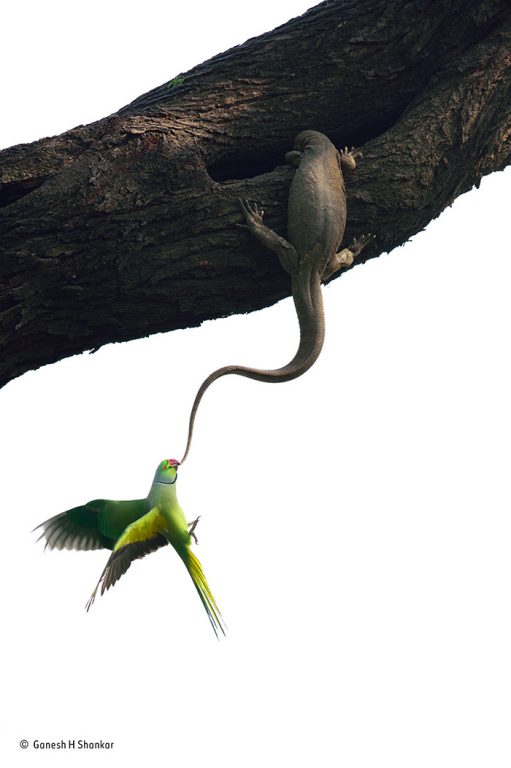
These Indian rose-ringed parakeets were not happy. They had returned to their roosting and nesting hole high up in a tree in India’s Keoladeo National Park (also known as Bharatpur Bird Sanctuary) to find that a Bengal monitor lizard had taken up residence. Photo by Ganesh H Shankar.
The birds immediately set about trying to evict the squatter. They bit the monitor lizard’s tail, hanging on for a couple of seconds at a time, until it retreated into the hole. They would then harass it when it tried to come out to bask. This went on for two days. But the action only lasted a couple of seconds at a time and was fast-moving. The branch was also high up, and Ganesh had to shoot against the light. Eventually the parakeets gave up and left, presumably to try to find another place to rear their young.
These Indian birds are highly adaptable, and escaped captive parakeets have founded populations in many countries. In Europe, where they are known as ring-necked parakeets, they are accused of competing for nest holes with some native species, such as nuthatches, and even bats, but in turn, other birds such as starlings are quite capable of evicting the parakeets from their nest holes.
10. Wind composition
Winner: Plants and Fungi
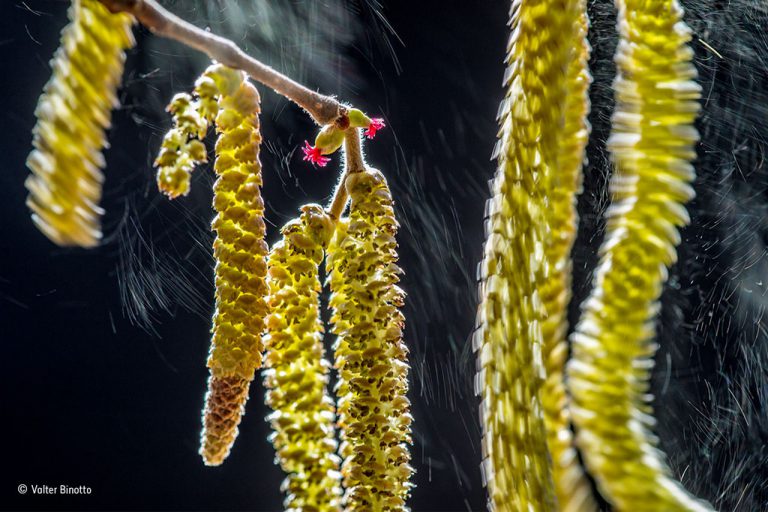
The hazel tree was near Valter’s home in northern Italy, and to create the dark background, he positioned himself to backlight the flowers. Photo by Valter Binotto.
With every gust of wind, showers of pollen were released, lit up by the winter sunshine. Hazel has both male and female flowers on the same tree, though the pollen must be transferred between trees for fertilization. Each catkin comprises an average of 240 male flowers, while the female flower is a small bud-like structure with a red-tufted stigma. The pollen-producing catkins open early in the year, before the leaves are out, and release huge amounts of pollen to be carried away by the wind.
And now recent research suggests that bees may also play a role. The catkins are an important source of pollen for early bees and have a bee‐friendly structure, while the red colour of the female flowers may entice insects to land on them. ‘The hardest part was capturing the female flowers motionless while the catkins were moving,’ explains Valter. ‘I searched for flowers on a short branch that was more stable.’ Using a long exposure to capture the pollen’s flight and a reflector to highlight the catkins, he took many pictures before the wind finally delivered the composition he had in mind.

